On May 15, 2004, the 56th anniversary of the Nakba, Zochrot held the first ever March of Return in the city of Tel Aviv. The march began in the village Jamasin al-Garbi and ended in Summeil, reversing the direction in which the Palestinian residents were evacuated in 1948.
During the march, the group proceeded across the streets "Namir," "Pinkas," "Weizmann," and "Jabotinsky" — all named after men of the historical Zionist leadership. The group recounted the actions of these figures in contributing to the tragedy of 1948. We also took the opportunity to ask that the Tel Aviv municipality rename these streets for the Palestinian villages that existed in the area.
Six Palestinian villages existed in what is now Tel Aviv: Jamasin, Summeil, Abu Kabir, Sheikh Muwanis, Jrish, and Salameh. The group heard the histories of two these villages, Jamasin and Salameh, at the opening and closing of the tour.
Jamasin al-Garbi
Al-Jamasin was a pair of communities on the banks of the Awja river (today called "Hayarkon"), where Bedouin tribes permanently settled hundreds of years ago. The area, which was once full of swamps, was suitable for raising Jamus, a kind of wild ox. Thus the residents of the villages were called the "Jamusin herders." The community closer to the sea, at a distance of about 2.5 km, was called al-Jamasin al-Garbi (West Jamasin), and the community further inland, about 5 km, was called Jamasin al-Sharki (East Jamasin). Jamasin al-Garbi was close to the junction of Hayarkon and Yafa Malabas Road (Petakh Tikva Road). The existence of the village is documented in the tax rolls of the Ottoman government from the end of the 16th century. According to these records, the people of Jamasin belonged to the Nahiya tribe of Bani Sweib, Bedouin originally from the Jordan valley, and paid taxes for their oxen. More recent evidence from the 18th century indicates that this was a permanent settlement of Muslims in the area.
As said, the primary occupation of the members of the tribe was herding Jamus, marketing their milk and meat and selling them for use as transport in the Jaffa area. Until the 1920s the Bedouin residents lived in tents. With the expansion of the Jewish yishuv and decline of available swamp land for herding, the Bedouin became farmers and laborers and established mortar huts and wooden sheds. They planted 200 dunams of citrus, 150 dunams of banana trees, and 173 dunams of grain. Some of the residents worked as laborers in the groves of the German colony of Sharona (today the "Kirya," the major army base off Kaplan St.) According to the population census of 1922, western Jamasin had 200 residents and by 1944 their number grew to 1,000. The children of the community were educated at the school in the village of Sheikh Muwanis. In the 1948 war the residents coped with two problems: Clashes with Jewish looters from Tel Aviv and the absorption of residents from Summeil who fled at the end of December 1947. The enormous pressure by the Hagana on Jamasin forced the residents to flee on March 17 and to move to Sheikh Muwanis.
Summeil (al-Masawdiya)
The village al-Masawdiya was located at the center of the sea plain, about 1.5 km east of the shoreline and 1.5 km south of the al-Awja river ("Hayarkon"). The village is also known by its ancient name Summeil. The village initially acquired the name al-Masawdiya at the beginning of the 20th century, perhaps to differentiate it from another village called Summeil in the Hebron district. In the 1870s Summeil was described as a typical town with a deep well and a cavern. The village was constructed of houses grouped closely together along a street running north to south, today the section of Ibn Gvirol St. that runs between Jabotinsky and Shlomo Hamelekh Streets. The population of al-Masawdiya was mostly Muslim. In 1945 there were 20 Christian residents and according to the testimony of a resident of the area there were also Jews who lived there.
In 1931 the village primary school was established. In the 1940s, 31 pupils were enrolled at the school. The village had a mosque that was built on the remains of an ancient structure, apparently a church. In 1931 there were 658 residents in the village who lived in 127 houses.
The primary occupation of the residents of the village was tending to the orange groves, agricultural plots and livestock. A small number of residents earned their living by selling handicrafts and in domestic work. In 1938 the village tended orchards on 275 dunams of land. In 1943 the area came under the municipality of Tel Aviv.
A large evacuation of residents began in 1946 following pressure from the expanding city of Tel Aviv. With the outbreak of battles the residents of the village asked not to take part in the fighting and irregulars were sent from Jaffa to protect the village from robbery and looting. At the end of December 1947 Hagana forces took over the village and the residents fled to Jamasin al-Garbi. In the beginning of the 1948 war the furniture of the school was set on fire.
Following the 1948 war the village was used to solve the problem of a housing shortage for the residents of Tel Aviv, whose homes were burned or destroyed during the war, as well as new immigrants from Iraq. Due to its location in a prime real estate area, the municipality and contractors tried to remove the residents in exchange for a small amount of compensation and small, far-off apartments. The apex of the battle was in September 1962 when tens of police officers attacked the occupants and tried to evacuate them by force. A resident of the village, Evelyn, told us about the long and expensive legal struggle waged to stay in the area. Likewise, she talked about the refugees of Summeil who still come from time to time to visit the village.
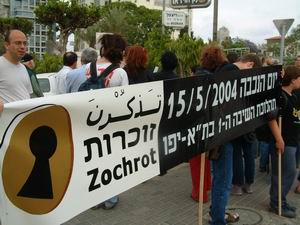
Tel Aviv March of Return 2004 (8)
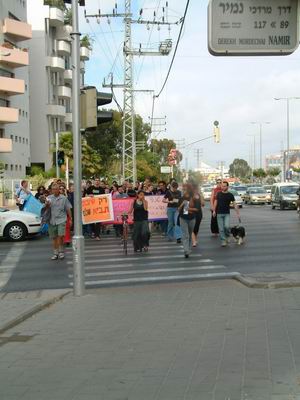
Tel Aviv March of Return 2004 (5)
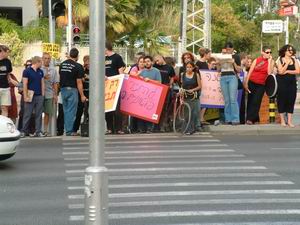
Tel Aviv March of Return 2004 (4)
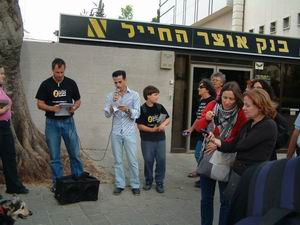
Tel Aviv March of Return 2004 (10)
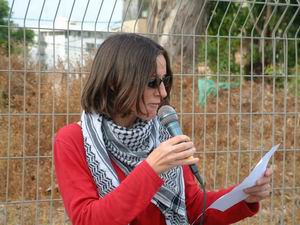
Tel Aviv March of Return 2004 (2)
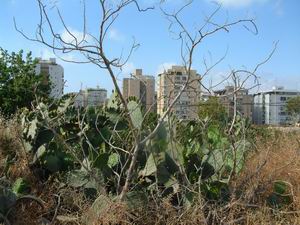
Tel Aviv March of Return 2004 (1)



